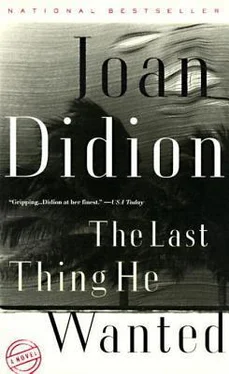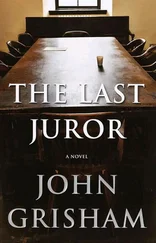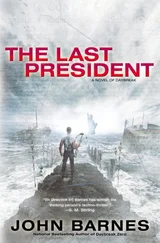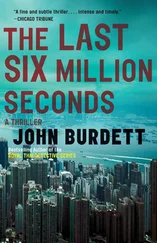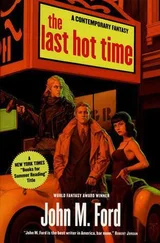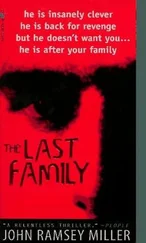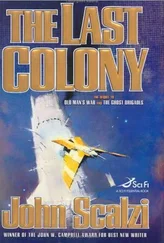Of course Dick McMahon was by then dead. Of course he had died under circumstances that would not appear in the least out of order: the notification to the nursing agency at noon on June 27 that Mr. McMahon’s night shift would no longer be required; the predictable midnight emergency twelve hours later; the fortuitous and virtually simultaneous arrival at the house in Sweetwater of the very attentive young doctor; the transfer in the early morning hours of June 28 to the two-bed room at the Clearview Convalescent Lodge in South Kendall; the flurry of visits over the next thirty-six hours from the very attentive young doctor and then the certification of the death.
It would not be unusual at this facility to see a degree of agitation in a new admission.
Nor would it be unusual, given the extreme agitation of this new admission, if a decision were made to increase sedation.
Nor would it be unusual, given the continuing attempts of this extremely agitated new admission to initiate contact with the patient in the other bed, to effect the temporary transfer of the patient in the other bed to a more comfortable gurney in the staff smoking lounge.
Nor would it be unusual if such an extremely agitated and increasingly ill new admission were, the best efforts of his very attentive young doctor notwithstanding, to just go. “Just going” was how dying was characterized at the Clearview Convalescent Lodge, by both patients and staff. He’s just going. He just went.
Nor would there be need for an autopsy, because whatever happened would be certified as having happened in a licensed care facility under the care of a licensed physician.
There would be nothing out of order about the certification.
Without question Dick McMahon would be gone by the time he was certified dead.
Which was, according to the records of the Clearview Convalescent Lodge in South Kendall, at 1:23 a.m. on the morning of June 30. Since certification occurred after midnight the bill submitted for reimbursement under Medicare A was for three full nights, June 28, 29 and 30. Policyholder deceased 171.4 was the notation placed on the Medicare A billing in the space provided for Full Description of Condition at Discharge Including Diagnostic Code.
McMAHON, Richard Allen: age 74, died under care of physician June 30, 1984, at Clearview Convalescent Lodge, South Kendall. No services are scheduled.
So read the agate-type notice appearing in the vital statistics column, which was compiled daily to include those deaths and births and marriages entered into the previous day’s public record, of the July 2 1984 edition of the Miami Herald.
It could have been established, by anyone who cared to check the nursing agency’s file on Mr. McMahon, that the June 27 call ordering the cancellation of Mr. McMahon’s night shift had been placed by a woman identifying herself as Mr. McMahon’s daughter.
It would remain unestablished who had placed the midnight call to the very attentive young doctor.
Because no one asked.
Because the single person who might have asked had not yet had the opportunity to read the agate-type notice appearing in the vital statistics column of the July 2 1984 edition of the Miami Herald.
Because the single person who might have asked did not yet know that her father was dead.
By the way. I wouldn’t call your dad. I’m keeping him in the picture about where you are and what you’re doing, but I wouldn’t call him.
Because it wouldn’t be smart.
At the time she left San José she did not yet know that her father was dead but there were certain things she did already know. Some of what she already knew at the time she left San José she had learned before she ever got to Costa Rica, had known in fact since the afternoon the sky went dark and the lightning forked on the horizon outside Dick McMahon’s room at Jackson Memorial and he began to tell her who it was he had to see and what it was he had to do. Some of what she already knew she had learned the day she brought him home from Jackson Memorial to the house in Sweetwater and managed to deflect his intention to drive down to where the Kitty Rex was berthed and Barry Sedlow was waiting for him. Some of what she already knew she believed to be true and some of what she already knew she believed to be delusion, but since this was a business in which truth and delusion appeared equally doubtful she was left to proceed as if even the most apparently straightforward piece of information could at any time explode.
Any piece of information was a potential fragmentation mine.
Fragmentation mines came immediately to mind because of one of the things she already knew.
This was one of the things she already knew: the shipment on the L-100 that left Fort Lauderdale-Hollywood International Airport at one-thirty on the morning of June 26 was composed exclusively of fragmentation mines, three hundred and twenty-four pallets, each pallet loaded with twelve crates, each crate containing between ten and two hundred mines depending upon their type and size. Some of these mines were antitank and some antipersonnel. There were the forty-seven-inch L-9 antitanks made by British Aerospace and there were the thirteen-inch PT-MI-BA III antitanks made by the Czechs. There were the POMZ-2 antipersonnels and there were the Chinese Type 72A antipersonnels and there were the Italian Valmara 69 antipersonnels.
69s.
Epperson had floated a figure of three dollars per for 69s and now he was claiming the market had dropped to two per.
When the pallets of 69s had finally been unloaded on the runway that morning she had been handed a hammer by the man with the shaved head and cutoff jeans and told to open a crate so that he could verify the merchandise.
Open it yourself, she had said, offering him back the hammer.
It doesn’t work that way, he had said, not taking the hammer.
She had hesitated.
He had unknotted a T-shirt from his belt and pulled it over his bare chest. The T-shirt was printed with an American flag and the legend THESE COLORS DON’T RUN.
I got nowhere particular to go, he had said, so it’s your call.
She had pried open the crate and indicated the contents.
He had extracted one of the small plastic devices, examined it, walked away and placed it on the ground halfway between Elena and the concrete structure. When he returned to Elena he was singing tunelessly, snatches of the theme from Bonanza.
He had moved back, and motioned her to do the same.
Then he had aimed a remote at the plastic device and whistled.
When she saw the dog burst from the open door of the concrete structure she had closed her eyes. The explosion had occurred between We got a right to pick a little fight and Bo-nan-za. The silence that followed was broken only by the long diminishing shriek of the dog.
“Guaranteed sixty-foot-diameter kill zone,” the man who was on his way from Angola to Tulsa had said then.
Here was the second thing she already knew: this June 26 shipment was not the first such shipment her father had arranged. He had been arranging such shipments all through the spring and into the summer of 1984, a minimum of two and usually three or four a month, C-123s, Convair 440s, L-100s, whatever they sent up to be filled, rusty big bellies sitting on the back runways at Lauderdale-Hollywood and West Palm and Opa-Locka and MIA waiting to be loaded with AK-47s, M-16s, MAC-10s, C-4, whatever was on the street, whatever was out there, whatever Dick McMahon could still promote on the strength of his connections, his contacts, his fifty years of doing a little business in Miami and in Houston and in Las Vegas and in Phoenix and in the piney woods of Alabama and Georgia.
Читать дальше
